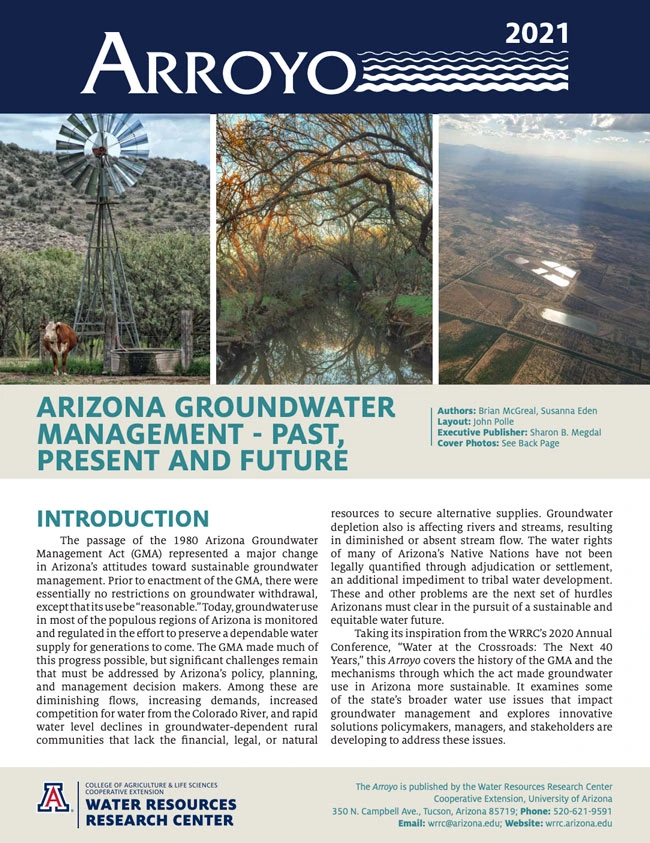
The passage of the 1980 Arizona Groundwater Management Act (GMA) represented a major change in Arizona’s attitudes toward sustainable groundwater management. Prior to enactment of the GMA, there were essentially no restrictions on groundwater withdrawal, except that its use be “reasonable.” Today, groundwater use in most of the populous regions of Arizona is monitored and regulated in the effort to preserve a dependable water supply for generations to come. The GMA made much of this progress possible, but significant challenges remain that must be addressed by Arizona’s policy, planning, and management decision makers. Among these are diminishing flows, increasing demands, increased competition for water from the Colorado River, and rapid water level declines in groundwater-dependent rural communities that lack the financial, legal, or natural resources to secure alternative supplies. Groundwater depletion also is affecting rivers and streams, resulting in diminished or absent stream flow. The water rights of many of Arizona’s Native Nations have not been legally quantified through adjudication or settlement, an additional impediment to tribal water development. These and other problems are the next set of hurdles Arizonans must clear in the pursuit of a sustainable and equitable water future.

